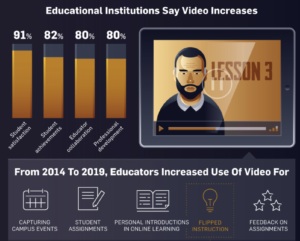The EDCI 339 course outcomes embodies key concepts, relating to an introduction to the practice of learning design and its application to interactive learning environments. Of the six learning outcomes, there are two that demonstrated the most growth in as a learner. My two choices of outcomes are: The development of an awareness of potential of human-centered learning in online learning contexts, and the conducted research into emerging and future educational technologies.

The awareness in human-centered is an on-going development and it has many implications surrounding learning in online and open learning contexts. Online learning platforms are often designed with students in mind, but the human-centered aspect of learning behind a computer screen can often be lacking and insufficient. Especially in the midst of the COVID-19 pandemic, students and instructors alike are often deficient of the classic brick-and-mortar class room experiences. As such, courses now offered online have an incorpration of humanization, to closer mimic the classroom experiences for students. In the second chapter of the book “Humanizing Online Teaching and Learning”, Cathy Barnes defines and expands upon the following three presences in online teaching:
- Cognitive Presence
- Instructor/Teaching Presence
- Social Presence
The second outcome that I feel I demonstrated the most growth in as a learner is the emerging of future educational technologies. The realm of online educational platforms is nothing new and have been around in the recent 20 year of academia. However, it is interesting to note that educational technologies are not sedimentary, and instead, rapidly evolving to adapt to new learning designs. Prior to taking this course, I have studied UX and this is in relation to app design and user interface. The importance of an user interface is often undermined, as it can make or break an user’s overall perception and usage of the given platform. In the EDCI 339 course, it explores many platforms and this includes are not limited to BrightSpace, Moodle, Blackboard and many more. However, we already see a deep integration of face-to-face technology softwares such as ZOOM, adding a humanizing touch to both instructor and students. In my personal opinion, the usage of ZOOM is current optional, but I foresee ZOOM being made mandatory in the future as it helps to cement a stronger learning experience in courses that are offered online.
I believe that pre-recorded webinars and videos have already became dominant in online learning, as it provides flexibility for students to view videos and webinars at their own preferred times. In relation to this, I believe online education designers are still seeking better ways to embed videos in platforms. For example, a video that is made available by instructor in Moodle can pose a number of issues as it heavily relies on Java-Script and Flash add-ons. The aforementioned video may display fine on a PC computer but may not be on an iOS apple iPad device. This led to commonly-used work arounds by posting videos on Youtube and then hyperlinking the video in Moodle. The reason I chose the video embedment in online platforms is because there is an increased adoption in the viewing of pre-recorded webinars rather than the attendance of live-webinars hosted by instructors.

In consideration of definitions and practical examples of distributed (online) and open learning, I believe that “open learning” is most effective for myself as a learner. The reason for this is strongly tied to available resources that is accessible and offered to me. Open learning offers the flexibility for students to access journals most relevant to my research/studies and not be limited by the selection of journals that my campuses are able to provide. In many recent cases, I was able to save costs on textbooks and instead adopt ebooks to save money, and have the ability to connect to campus library resources via secure VPN portals. This to me is a spectrum of freedom and flexibility as I am able to seek resources made available by the school.
Finally, the most valuable thing that I have learned about myself as a learning throughout this course is open and effective communication. This course focuses on learning design and its application to interactive learning environments. Yet during my time studying this very course, I feel that effective communication is very crucial to my success in studying. For example, I love how BrightSpace have a well designated sections of resources for students. I am able to login to BrighSpace and be able to click through my assignments and instructions of weekly reading materials. The overall experience have been phenomenal and and positive. Communication plays a key role in the facilitation of this course and I especially enjoyed the live-webinars hosted between Dr. Roberts and guest speakers, as this helped to simplify harder-to-understand course concepts. On the whole, EDCI-339 is a valuable course and I would whole-heartedly recommend it to my peers.
Leave a Reply